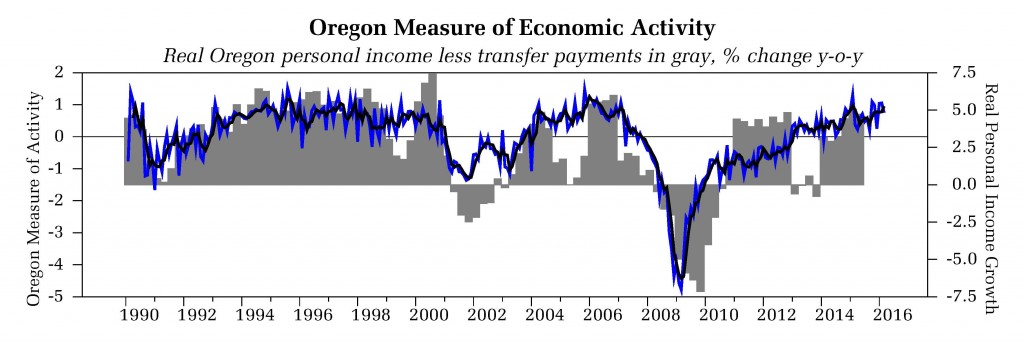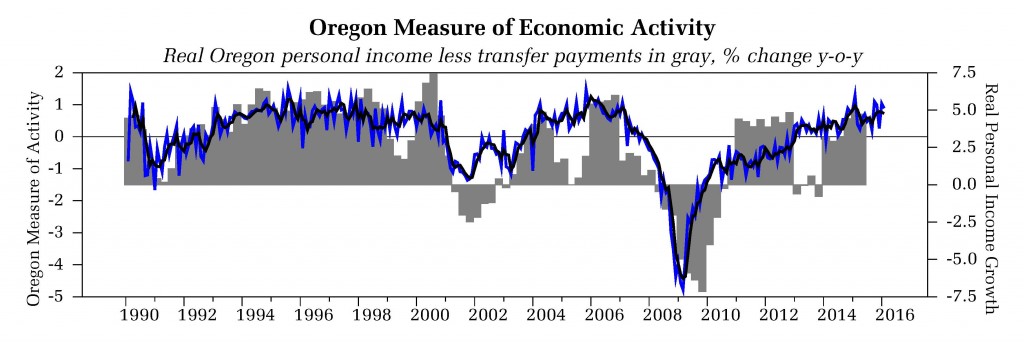The March 2016 State of Oregon Regional Economic Indexes of was released today. Full report is available here. We thank KeyBank for their generous support of this project.

Oregon’s major metro regions continued to power forward in March. Highlights of the report include:
- The measures for all regions indicate above average growth (both the March numbers and the moving average measures of activity, which smooth monthly volatility). Recall that “zero” for these measures indicates relative average growth; each region has its own underlying growth rate.
- Home construction, measured by new housing permits, contributed positively to both the Portland metro and Central Oregon regions as activity in those areas edges closer to that normally experienced in expansions. Permits had a negative contribution in remaining regions. Home sales, however, are strong in all areas – indeed, in many cases we are seeing activity at levels similar to that experienced during the housing bubble that proceeded the last recession. It seems likely that more home construction will follow.
- The Eugene-Springfield area experienced some choppier employment numbers this month, but this likely reflects normal volatility. Low initial unemployment claims – similar to other regions – indicates a solid underlying labor market.
- Note low unemployment rates are providing a solid boost to the measures in all areas. More population and stronger economic activity are boosting municipal waste contributions to the measures.
- The Salem measure pulled back from a housing-induced spike in February, but the solid upward underlying trend remains intact.
Reminder: The regional measures are prone to potentially large swings due to the volatility of some of the underlying data, particularly measures of employment. The moving average measures smooth out much of that volatility.





